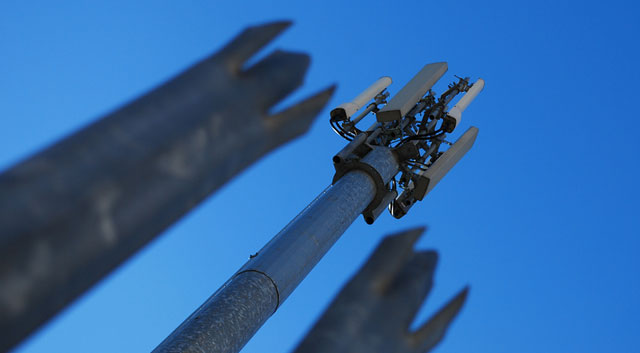
The capacity of today’s wireless communications networks has increased a million-fold since the introduction of the first cellular network in 1957.
But this improvement isn’t due to improving connectivity technologies such as Wi-Fi, 2G, 3G and so on, which have contributed only a five-fold increase. Using additional radio frequency spectrum to carry network traffic accounts for a 25-fold improvement — but the largest single improvement, accounting for a 1 600-fold increase, is via shrinking the size of the network “cells” that constitute the network. In other words, installing more physical network towers, repeaters and other equipment to create a denser network of nodes that can carry greater network traffic.
But this has been very expensive — digging for cables, putting up towers and base stations, installation and maintenance, and all the planning and bureaucratic requirements that entails. So much of next-generation mobile network design focuses on squeezing greater speed and capacity from what we already have, without the costs of adding more infrastructure.
One area under investigation is the concept of downlink (DL) and uplink (UL) decoupling, dubbed by some of its co-inventors DUDe. From the first-generation mobile networks to the latest 4G, the downlink (or receive) and uplink (or send) connections of any communication session have been coupled together. This means a mobile phone associates with one base station at a time and data is both sent and received through the same connection.
Historically, this was a near-optimal approach, since that way the base station and mobile phone would establish the strongest connection that could be provided in both directions. However, as mobile networks have become more diverse, mixing together network cells of different sizes and transmission towers of different transmission power, it now makes more sense to separate the two. A phone could receive information through a high-power, large network cell for maximum speed, and use smaller cells to send data through its lower-power radio. This can yield double capacity and make connections up to 10 times more reliable.
Doubling up on duplex
Another area under investigation is that of full-duplex radio transmission. Full duplex refers to the concept of being able to transmit and receive over the same frequency at the same time, in the same way we’re able to talk over each other on a traditional, analogue landline telephone.
The sort of repeaters used to extend network coverage in the satellite, broadcasting and mobile network industries have used full duplex for decades. But this is achieved using two different antennas placed sufficiently far apart that the strong transmitting signal does not interfere with the weaker receiver signal. Who can design a single-antenna system that provides full duplex operation?
It all comes down to using signal echo cancellation. The first milestone work appeared in 1978 but was not made operational until the 1990s. The essence of all these systems is to cancel the strong outgoing transmit signal from the weak incoming receive signal, eliminating interference. However this technique only works over a fairly narrow bandwidth of a few megahertz or so.
Only recently has the ability to offer full duplex over wide bandwidths become available, ranging from 10MHz to 100MHz, where cancellation is achieved both in the analogue as well as digital domain.
One firm leading in this area is Kumu Networks, a spin-out firm from Stanford University engineers that garnered US$15m in investment funding following its first demonstration of full duplex using signal inversion cancellation techniques four years ago. The technology refines existing theoretical work and is compliant with real-world cellular systems. This is an important step from a proposed feature to a viable product.
Using similar techniques, engineers at Columbia University have recently implemented this on a single chip, miniaturising the circuitry required for full duplex into a single silicon chip for the first time. At this scale, the technology could be introduced to mobile phone handsets or tablets to improve performance — potentially a game-changing moment as adding further silicon chips to existing mobile phones or tablets is relatively straightforward. With some extra tuning, if introduced universally, this could essentially allow us to double network capacity overnight.
Another approach is massive multiple antenna systems, dubbed Massive-MIMO. Invented by Tom Marzetta at Bell Labs, it uses a very, very large number of antennas stuffed into base stations and mobile phone handsets if possible. We’re talking thousands of antennas, rather than the three to six commonly used today. Counterintuitively, in theory this would in fact eliminate interference in the system and significantly boost network capacity and reliability.
For now, all these approaches are still at an early stage and face considerable challenges. However, while these next-generation designs would require some software and hardware upgrades, one thing they won’t require is digging holes and laying cables.![]()
- Mischa Dohler is professor of wireless communications at King’s College London
- This article was originally published on The Conversation

